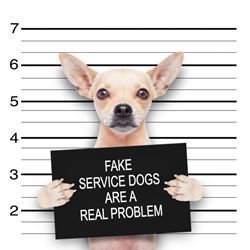
THE IMPORTANCE OF CONSIDERING YOUR MOTIVATION FOR GETTING AN ASSISTANCE DOG, AND WHETHER ALTERNATIVE OPTIONS MAY BE BETTER SUITED TO YOUR NEEDS OR LIVING SITUATION
There is the growing trend of people wanting an assistance dog instead of needing one nowadays. It isn’t something you get just because your friend has one, or because someone you know has one and they have the same condition as you. That isn’t how it works – two people can have the same illness or disorder as each other but one can be barely affected, while the other can be severely disabled by it.
Also, although it may benefit you to have one, it isn’t always the right path for you, the dog, other disabled people, or the general public. It can be more hassle than its worth for a lot of people, and create a lot of its own problems (including anxiety from attention from the public, and the financial strain of caring for a dog needing high maintenance, insurance etc. can be an added, unnecessary burden for some).
There are plenty of alternatives to assistance dogs, including medication, lifestyle changes, alternative therapies, talking therapies etc. and these should be considered (check out our previous page about whether an AD is right for you).

Breed Needs
It is also important that you consider your needs when it comes to choosing a breed (something we discuss further on this page). For example, you may love a particular breed that may just not be best suited to either your living situation (garden/yard, space, work structure etc.) or to assistance dog work at all. Also it is about being honest with yourself about your motivations for getting a particular breed.
Ask yourself: Why do I want this dog? Do I want this breed because it is best for its working purpose to help me or do I want this breed purely because of how it looks or its connotations (being fashionable, trendy)? Do I want this dog breed because I want to “fit in” or to “stand out”/”be different”?
These are not reasons to get a particular breed – an assistance dog is not a fashion statement; it is a piece of medical equipment (that doubles as your best friend/companion, don’t get me wrong). Sure, that doesn’t mean you can’t choose a breed you love – you don’t have to specifically choose a breed you don’t like! – but it does mean you have to factor in whether the breed is fit for purpose. And fit for purpose for your specific needs (e.g. not a chihuahua, or even a spaniel, for mobility).
Don’t just go for a non-fab 4 breed “to be different” – there’s a reason why the fab 4 are highly recommended, especially for first time owners. Some breeds require the owner to have prior breed experience in order to truly succeed and without this, in many cases you are just harming your own chances! Furthermore, breed fads are dangerous and harmful for the dogs themselves – you end up with mass purchases of a certain breed, rejection of others, and over-breeding (and irresponsible backyard breeding) of the particular breed. This ultimately ends in more dogs in rescues and shelters, and a larger number of unhealthy dogs (who therefore are less suited to assistance work).
Fakes
There are also so-called fake assistance/service dogs. Some of these are actually poorly trained attempts at assistance dogs but others (more problematically), some are people who have misunderstood or misconstrued the (very vague UK) laws. However, some are people abusing the Assistance Dog name in order to take their untrained pet with them wherever they go. It is important to consider your motivations and make sure that you’re not just wanting an assistance dog so you can take your dog everywhere with you, or because it “makes you feel better” (that does not make a dog an Assistance Dog).

Ultimately only you can truly answer these questions for yourself, and determine whether you have the right motivations for getting an Assistance Dog.

